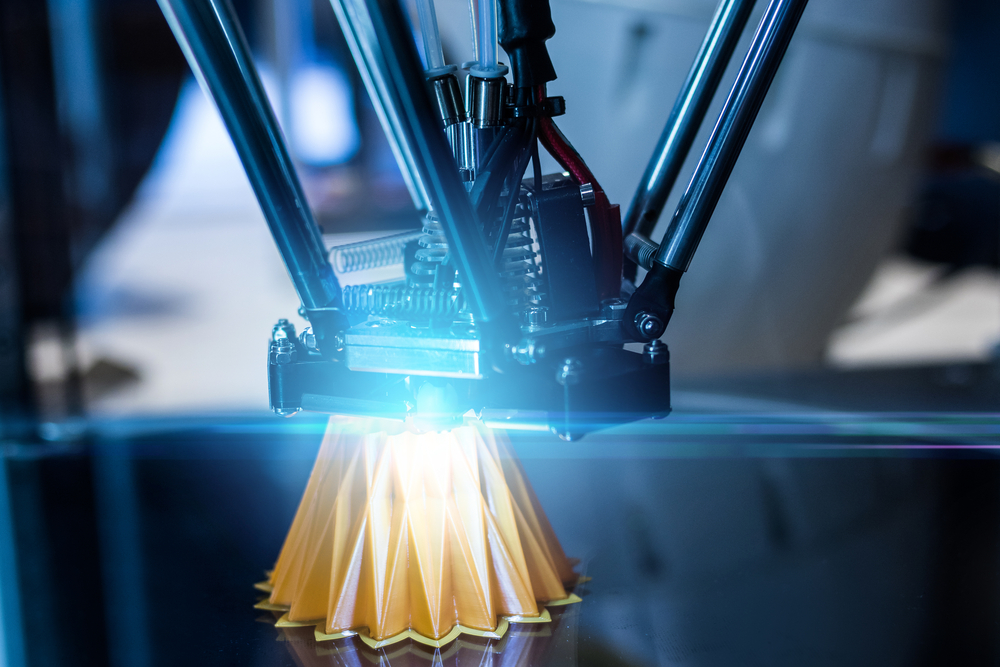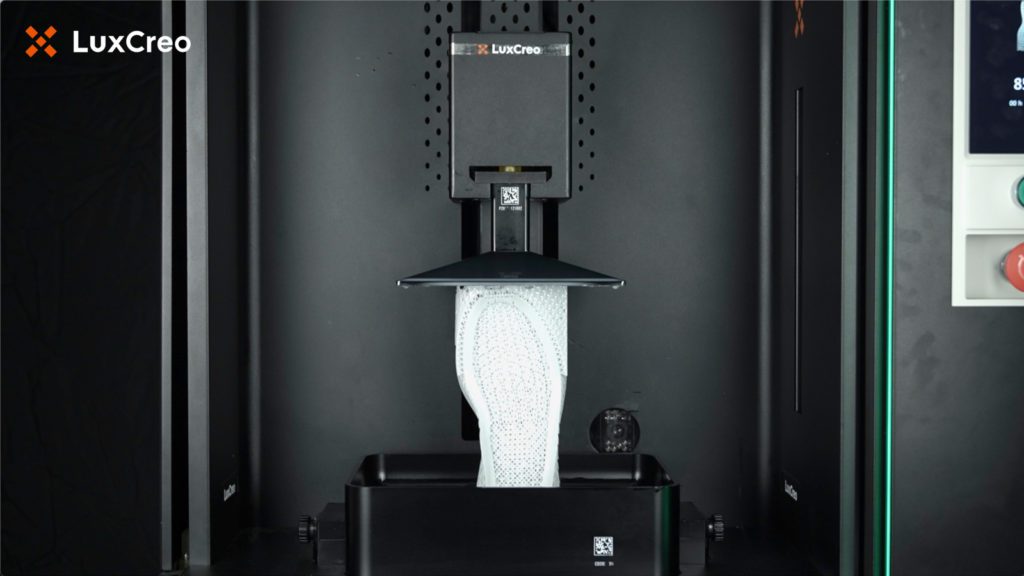Every year, American manufacturers generate and dispose of 7.6 billion tons of solid waste, according to data released by the EPA. Despite being recyclable, a significant portion of that waste ends up in landfills, including 1.5 million tons of toxic chemicals in 2018 alone. As a result of statistics like these and heightened consumer interest in eco-friendly products, many companies are encouraged to explore sustainable manufacturing. 3D printing solutions have increasingly become an avenue towards less waste and more eco-friendly while enabling higher-performing products.
By enabling localized production, utilizing bio-input materials, and improving inventory management, 3D printing optimizes manufacturing operations for greater sustainability. We’ll examine how 3D printing is supporting sustainability from prototyping to full production.

How 3D Printing Makes Manufacturing More Sustainable
A large part of what makes 3D printing more sustainable than traditional manufacturing is the elimination of entire steps in the production process. As key parts of the workflow are consolidated or removed, so does the waste associated with them.
For instance, unlike injection molding, 3D printing doesn’t require tooling, eliminating the need for molds and related tools. The elimination of tooling benefits many industries in terms of saved costs and speed-to-market. For instance, custom footwear manufacturers have an enormous amount of waste bringing together different materials to make shoes with localized performance. Producing dental appliances, like retainers and nightguards requires a mold unique to the patient that is discarded after completing the product. With 3D printing, manufacturers utilize digital files to build products from the ground up, making molds unnecessary.
In both injection molding and CNC milling, discarded scrap is inevitable, as waste is either produced from the mold channels and overflows in injection molding, or from CNC milling’s subtractive process through material removal. 3D printers, such as DLP printers, build products using only the necessary material, with waste typically limited to support structures if they are used during the build.
There have also been significant advancements in bio-based resins for DLP printers. Bio-based resins reduce dependency on fossil fuels and can decompose naturally, or be recycled and reused.
The increased efficiency, a significant reduction in material waste, and shift to bio-based inputs make 3D printing more sustainable than alternative manufacturing processes.
How to Maximize Sustainability in 3D Printing Processes
In addition to eliminating tooling, reducing waste, and supporting bio-based inputs, 3D printing can also augment product inventory made with traditional manufacturing and make manufacturing more viable in high-cost regions.
Optimized Design
Traditional manufacturing methods have limited geometries they can produce. CNC machining can make complex parts, but the more complex the part, the greater the cost as it requires more skilled technicians and even special tooling. Injection molding has its own set of geometric restrictions that often requires designers to take a product design and redesign it as multiple parts and assemble them later. 3D printing has no restrictions on geometries, allowing more efficient material usage, and can consolidate parts reducing waste from production and yield loss.
Localized Smart Factory Access
Smart factories create products with more efficiency and less human intervention than traditional manufacturing plants. The more autonomous approach avoids the worker-heavy assembly lines that limit most plants to regions with inexpensive labor. Reducing labor costs enables greater flexibility on where smart factories are located. With autonomy and localization of smart factories, there is faster product turnaround and reduced pollution from shipping and transportation.
The digitized nature of 3D printing allows businesses to connect to smart factories through the cloud. Rather than having to ship molds to lay the groundwork for production, designers can send their digital model files to the facility for production.
Improved Inventory Management
When dealing with conventional contract manufacturers, companies often must fulfill high minimum order quantities (MOQs). These MOQs can pose significant hurdles, as they require high upfront investments and inventory that needs storage for an indefinite amount of time. Factor in the possibility of a product redesign, and this backstock or overstock can end up a liability.
In contrast, 3D printing enables on-demand production, eliminating unnecessary backstock, and provides instant access to scale. Additionally, on-demand production and digital file delivery allow for agile responses to market demand for more products or redesigns.
Expanded Material Selection and Design Freedom

3D printing not only provides greater inventory control but also design freedom. For instance, 3D printing can simplify products and reduce assembly labor. For example, for shoes, 3D printing can eliminate the need to separately make midsoles and outer soles, and in some cases even uppers – consolidating the parts into a single production step. 3D printing a one-piece shoe eliminates the non-recyclable glue used in shoe construction, paving the way for more sustainable footwear.
3D printing also offers a large selection of high-performing, sustainable materials and is improving the footwear industry. Footwear companies can make running shoes with 3D printed midsoles made of high-quality polyurethane that has 10-20% bio input. 3D printed midsoles last longer than foam and can have the same or higher performance. A recent comparison of 3D printed and foam shoes show that there is a compression set after 100,000 heel strike cycles with foam, while polyurethane shoes made with LEAP Technology can withstand 1,000,000 cycles before experiencing performance degradation. It is not uncommon in the running world to say this is a “one marathon shoe.” The performance longevity increases the product’s lifetime, lowering the number of shoes destined for a landfill.
3D Printing Achieves Higher Levels of Sustainability
Companies considering how to make manufacturing more sustainable should look at 3D printing. With the ability to significantly reduce waste, localize production, and provide greater control over inventory and design, 3D printing can lay the foundation for increased sustainability without sacrificing quality.
To learn more about how to make manufacturing more sustainable, get in touch with LuxCreo. We provide large-scale 3D printing solutions for many industries, ranging from aerospace engineering, medical devices, and consumer goods. We can work with you to determine how a 3D printing solution can best meet your manufacturing requirements. Visit our contact page or call (650) 336-0888 to learn more.

